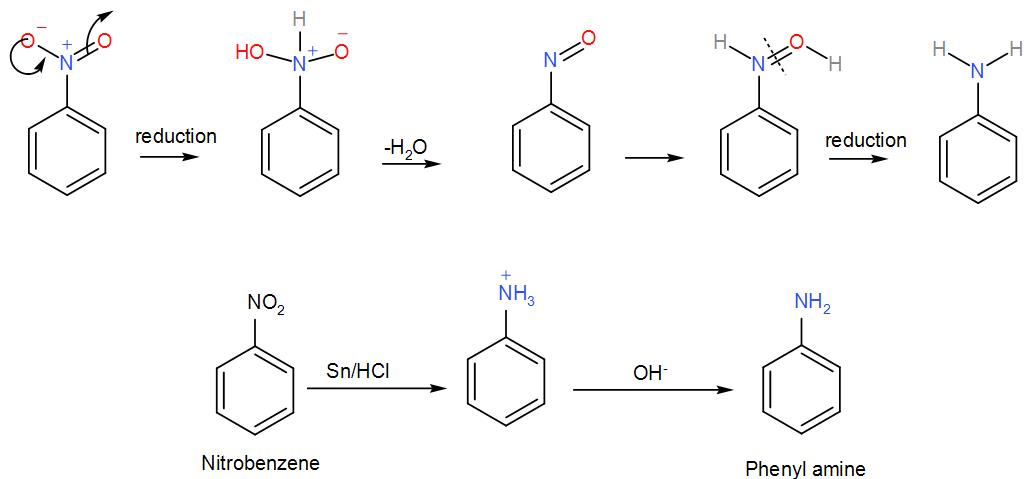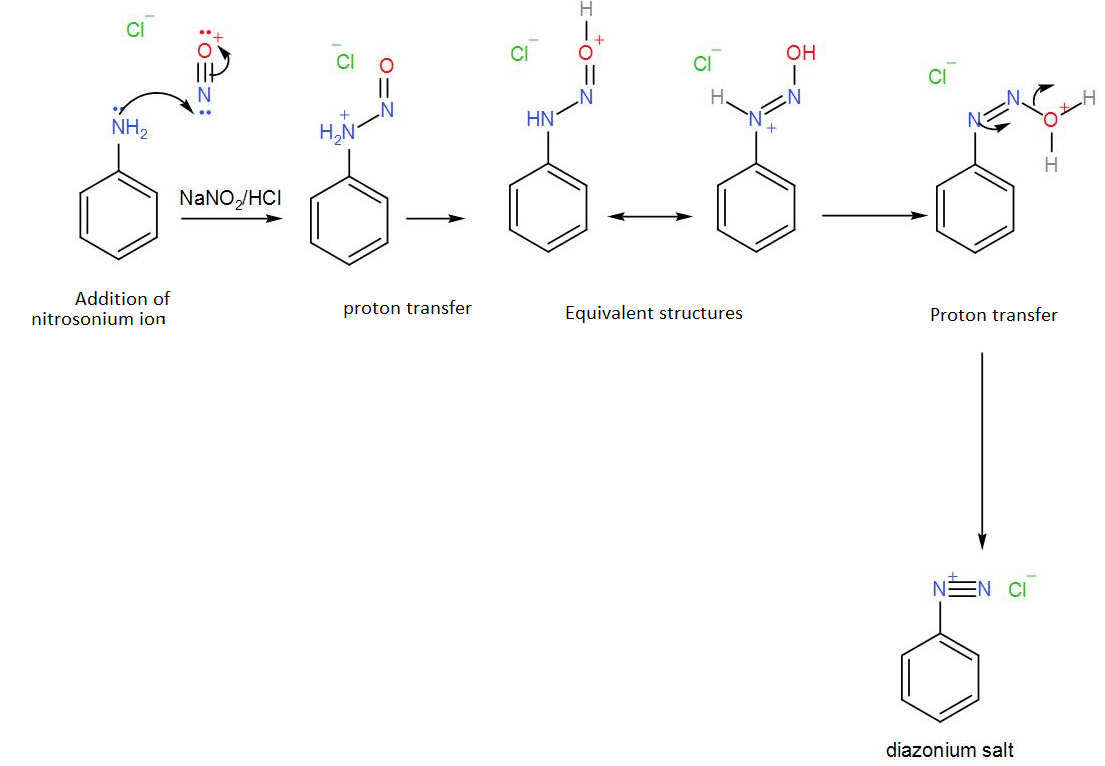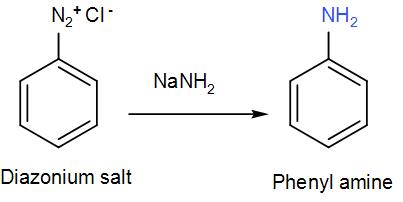
Identify ‘C’ in the following reaction:

[A] Benzamide
[B] Benzoic acid
[C] Chlorobenzene
[D] Aniline
Answer
220.2k+ views
Hint: To solve this, proceed step wise and identify A, B and then arrive at C. Remember that tin with hydrochloric acid will reduce nitrobenzene and will give you an amine. Upon reaction with sodium nitride the amine will give you a salt. The salt will react with sodium amide and again arrive at phenyl amine.
Complete step by step solution:
To solve this, let’s see the reaction of nitrobenzene with the given reagents and then arrive at the final result.
In the first step, nitrobenzene reacts with tin and hydrochloric acid. It is a redox reaction and here the nitrobenzene is reduced to phenylamine. The reaction proceeds via formation of a phenyl ammonium cation by reduction of nitrobenzene. We can write the reaction as-

So, phenylamine is ‘A’. To this, sodium nitrite is added which will cause the amine to undergo diazotization. The hydrochloric acid in the reaction will react with it thus leading to the formation of a diazonium salt of benzene called benzene diazonium chloride. We can write the reaction as-

The diazonium salt thus obtained is our ‘B’.
To this diazonium salt when we add sodium amide we will again get the phenyl amine. We can write the reaction as-

The phenyl amine is ‘C’. It is also known as aniline.
We can see from the above discussion that the ‘C’ in the reaction series is aniline.
Therefore, the correct answer is option [D] Aniline.
Note: Primary amines give us a diazonium salt which forms alcohols in addition to water but secondary amines have one hydrogen atom attached to them therefore, they cannot complete the diazotization reaction and give us a yellow oily nitrosamine product. Three degree amines have no hydrogen atoms attached to them thus they undergo simple acid- base reactions and give us soluble salts.
Complete step by step solution:
To solve this, let’s see the reaction of nitrobenzene with the given reagents and then arrive at the final result.
In the first step, nitrobenzene reacts with tin and hydrochloric acid. It is a redox reaction and here the nitrobenzene is reduced to phenylamine. The reaction proceeds via formation of a phenyl ammonium cation by reduction of nitrobenzene. We can write the reaction as-

So, phenylamine is ‘A’. To this, sodium nitrite is added which will cause the amine to undergo diazotization. The hydrochloric acid in the reaction will react with it thus leading to the formation of a diazonium salt of benzene called benzene diazonium chloride. We can write the reaction as-

The diazonium salt thus obtained is our ‘B’.
To this diazonium salt when we add sodium amide we will again get the phenyl amine. We can write the reaction as-

The phenyl amine is ‘C’. It is also known as aniline.
We can see from the above discussion that the ‘C’ in the reaction series is aniline.
Therefore, the correct answer is option [D] Aniline.
Note: Primary amines give us a diazonium salt which forms alcohols in addition to water but secondary amines have one hydrogen atom attached to them therefore, they cannot complete the diazotization reaction and give us a yellow oily nitrosamine product. Three degree amines have no hydrogen atoms attached to them thus they undergo simple acid- base reactions and give us soluble salts.
Recently Updated Pages
Electricity and Magnetism Explained: Key Concepts & Applications

JEE Energetics Important Concepts and Tips for Exam Preparation

JEE Isolation, Preparation and Properties of Non-metals Important Concepts and Tips for Exam Preparation

JEE Main 2021 July 25 Shift 1 Question Paper with Answer Key

JEE Main 2021 July 22 Shift 2 Question Paper with Answer Key

States of Matter Chapter For JEE Main Chemistry

Trending doubts
JEE Main 2026: Application Form Open, Exam Dates, Syllabus, Eligibility & Question Papers

Derivation of Equation of Trajectory Explained for Students

Hybridisation in Chemistry – Concept, Types & Applications

Understanding the Angle of Deviation in a Prism

Understanding Atomic Structure for Beginners

How to Convert a Galvanometer into an Ammeter or Voltmeter

Other Pages
Solutions Class 12 Chemistry Chapter 1 CBSE Notes - 2025-26

NCERT Solutions For Class 12 Chemistry Chapter 1 Solutions - 2025-26

The D and F Block Elements Class 12 Chemistry Chapter 4 CBSE Notes - 2025-26

NCERT Solutions for Class 12 Chemistry Chapter Chapter 7 Alcohol Phenol and Ether

NCERT Solutions ForClass 12 Chemistry Chapter Chapter 8 Aldehydes Ketones And Carboxylic Acids

JEE Advanced Marks vs Ranks 2025: Understanding Category-wise Qualifying Marks and Previous Year Cut-offs




